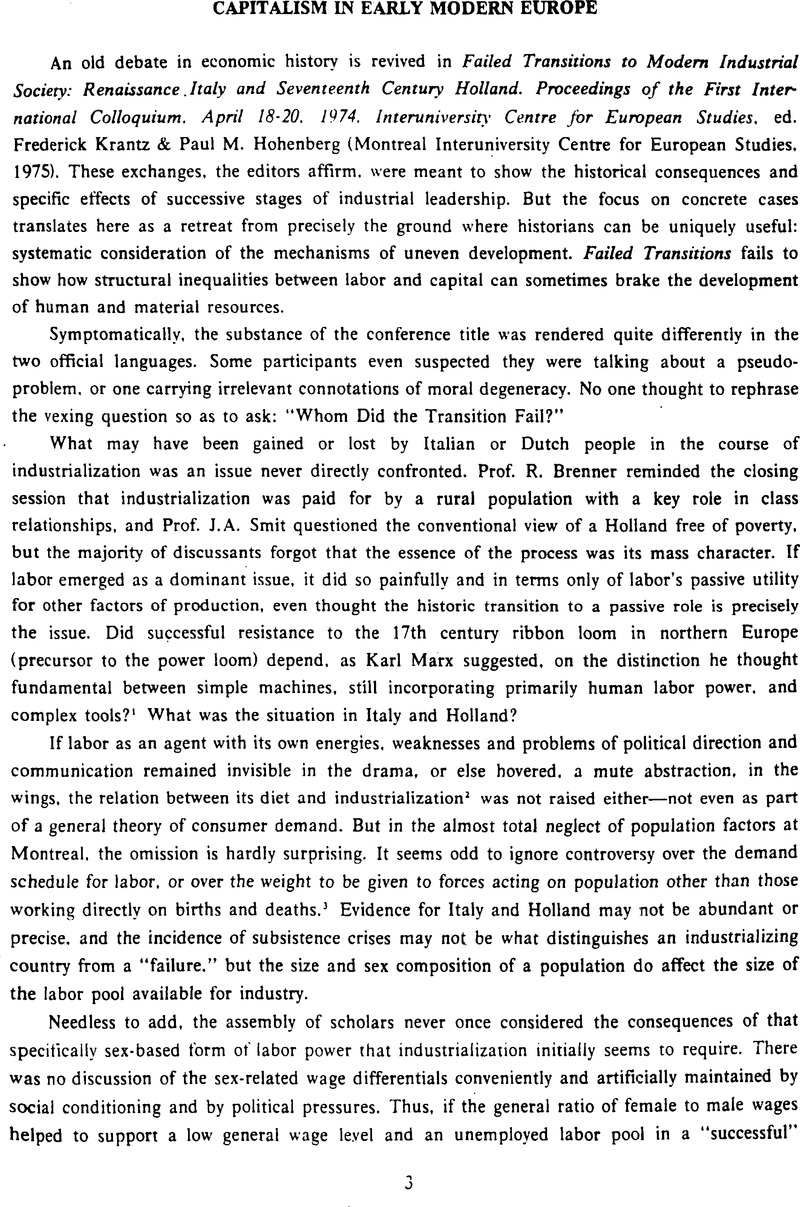No CrossRef data available.
Article contents
Capitalism in Early Modern Europe
Published online by Cambridge University Press: 16 December 2008
Abstract

- Type
- Reports
- Information
- Copyright
- Copyright © International Labor and Working-Class History, Inc. 1976
References
1. Marx, Karl. Capital (New York: International Publishers. 1967). vol. 1. pp. 367–68, 371–78, 428.Google Scholar
2 See. e.g., Elborg, and Forster, Robert. eds., European Diet from pre-Industrial to Modern Times (New York: Harper Torchbooks. 1975).Google Scholar
3 E.g., Marshall, T. H.. “The Population Problem during the Industrial Revolution: A Note on the Present State of the Controversy.” in Glass, D.C. and Eversley, D.E.C., eds., Population in History (Chicago: Aldine Press. 1965).Google Scholar
4. Isolated studies on contrasting regions of Italy suggest what these patterns might be: e.g., Todd, E.. “Mobilité geógraphique et cycle de vie en artois et en toscane au XVIIIe siècle,” Annales. E.S.C. 30:4 (07–08. 1975).Google Scholar
5. Wallerstein, I.. The Modem World System: Capitalist Agriculture & the Origins of the European World-Economy in the I6th c. (New York: Academic Press. 1974).Google Scholar
6 Marx. Capital, vol. 1. pp. 146. 153–154. 160.Google Scholar
7. DuPiessis, Robert. “Class Consciousness in Western European Cities. 1400-1650.” Radical History Review 3:1–2 (Fall-Winter 1975).Google ScholarAn ethnological approach to location of industry may be found in René Maunier. L'Origine et la fonction économique des ville études de morphologie sociale (Paris: V. Giard & E. Briere. 1910)Google Scholar




